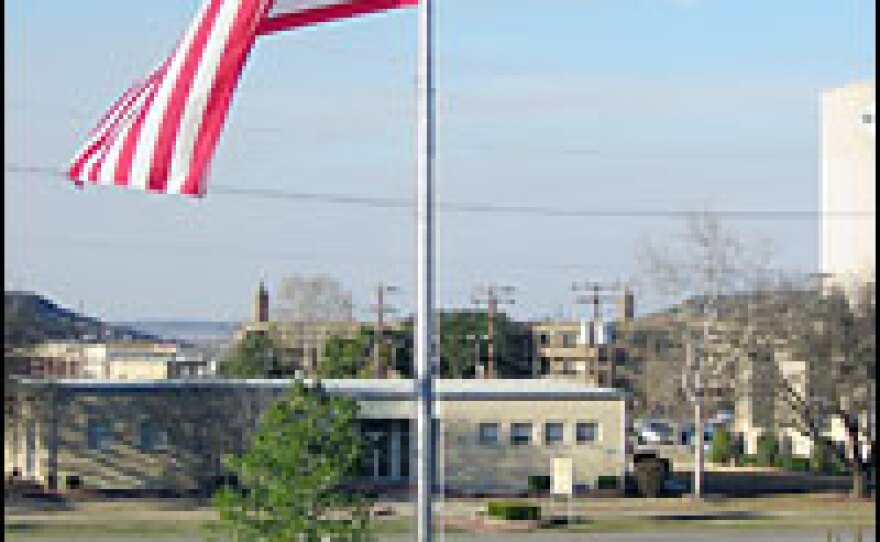


Next month, the United States will enter its fifth year of war in Iraq. The conflict has had a deep impact on communities across the country — perhaps nowhere more than Fort Hood in Killeen, Texas.
Fort Hood is the only military post that is home to two active divisions: the 4th Infantry and the 1st Cavalry of the U.S. Army. The 1st Cavalry Division is currently deployed, while the 4th Infantry Division returned last fall from its second deployment.
Covering 340 square miles, the fort is the home base of 50,000 soldiers. More than 600 who were stationed there have died since the war began.
The 4th Infantry Division Memorial commemorates those fallen soldiers.
On a recent day, Lt. Col. Peter Bacon visited the memorial. He was the battalion officer for Pvt. Rashid Sahib, who was killed in Iraq on May 18, 2003, and whose name appears on one of the plaques adorning the memorial.
"He was a good guy," Bacon says. "He was firmly committed. Whenever he wasn't in base, when we were over there, he was always out among the children. He had candy in his pockets."
Workers are in the process of building an addition to the memorial: a second semicircle to ring the first.
The memorial was originally designed for the names of the 81 soldiers under the 4th Infantry's command who were killed in the first deployment.
Then the division was sent to Iraq again. And many soldiers fully expect to return to Iraq for a third deployment.
For now, Command Sgt. Maj. Dwight Morrisey says he's happy to be alive.
"That's pretty good, considering," he says.
He also says he's proud of the work the 4th Infantry has done in Iraq, restoring electricity and water. But he cautions that the work will take more than just a few months.
"These people have been living like that for a long time, so it's going to take some while," he says.
For Maj. Brian Pierce, one big adjustment is finding the "off switch" — to just do nothing and relax. And he says another issue is confronting opposition to the war.
Of a group of protesters who recently gathered outside Fort Hood, Pierce says, "If you want to stop the war, go to Capitol Hill. We just do what we're told. Do we have reservations about what we're being told? Sure. Everybody's got reservations. But last time I checked, we have a volunteer army. We're here because we want to be here."
Maj. Gen. Jeff Hammond took command of the 4th Infantry in January. He acknowledges the "anguish with the unknown" that soldiers face.
"When there's a call in my house late at night when I'm deployed, my wife is afraid to answer the phone," Hammond says. "No one in their right mind should be happy with continuous deployments."
But in the end, he says, continuous deployments are "what we do."
NPR's Melissa Gray produced this story.
Copyright 2023 NPR. To see more, visit https://www.npr.org. 9(MDAzMjM2NDYzMDEyMzc1Njk5NjAxNzY3OQ001))







